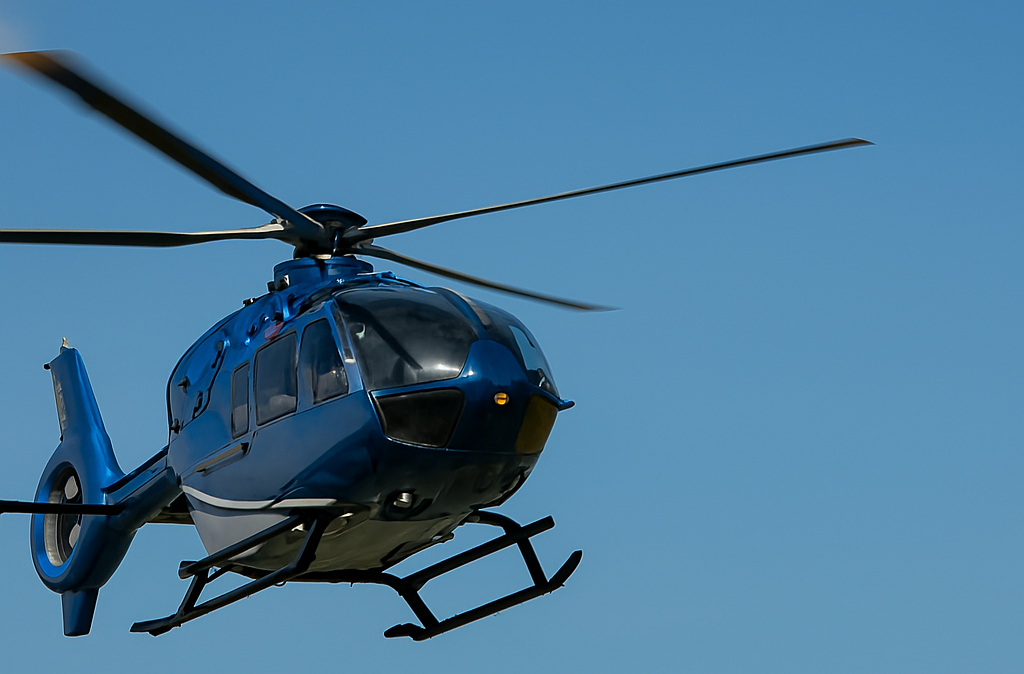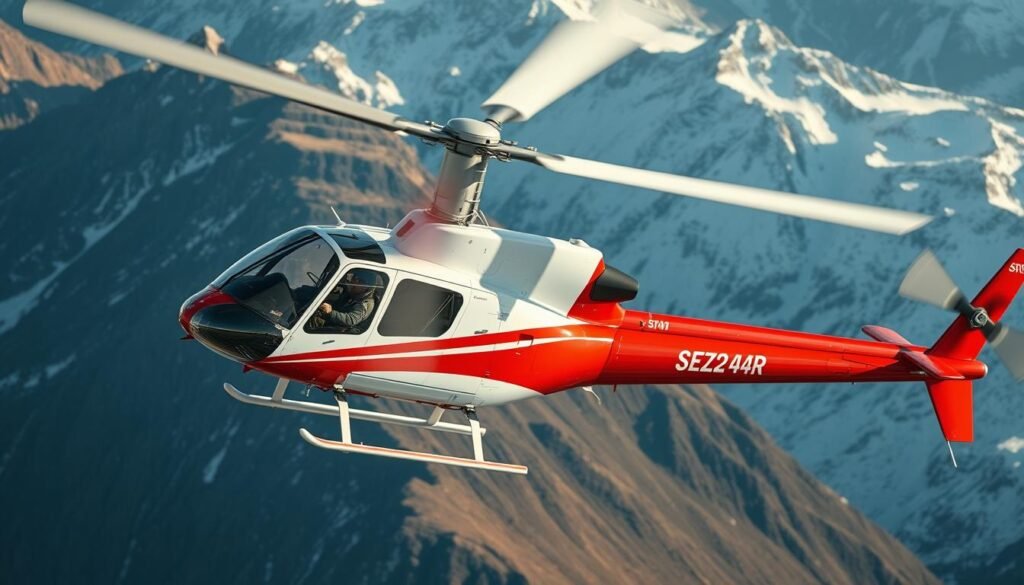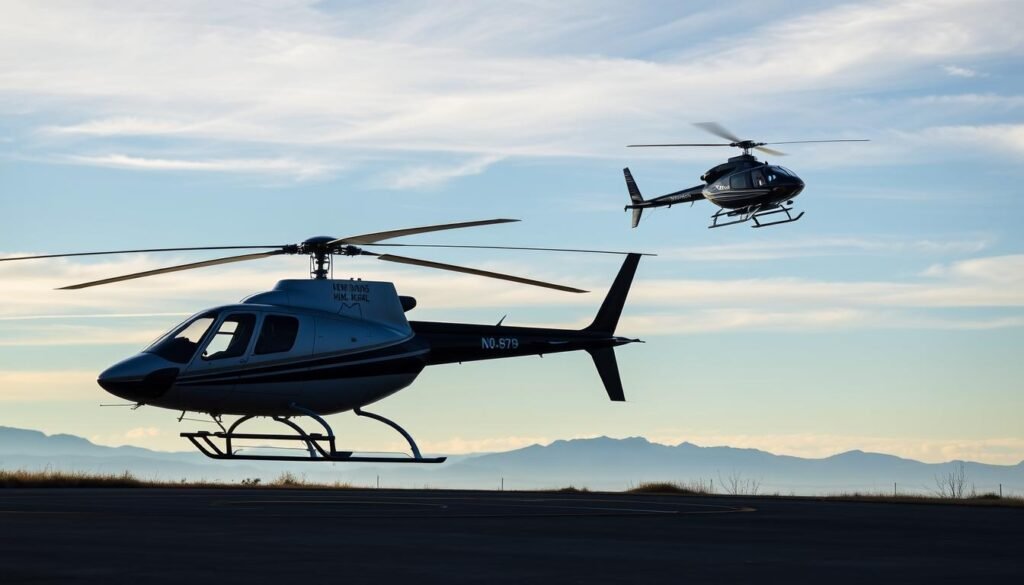Helicopter companies hiring in 2026 face a seasonal surge that reshapes recruiting for pilots, mechanics, and operations staff across Alaska and other high-demand regions.
Who will win the race to staff peak tourism months while maintaining world-class safety and service?
This introduction outlines clear information about what applicants should expect. Coastal Helicopters seeks seasonal tour pilots for Southeast Alaska (April–September) with at least 1,000 PIC hours and an instrument rating; Airbus H125 experience is preferred. TEMSCO Helicopters runs bases in Juneau, Skagway, and Denali and opens seasonal applications timed to peak demand.
The page previews how future hiring cycles, operational systems, and experience requirements shape selection. It links readers to a curated list of top aviation employers and direct application channels for rapid follow-up: top aviation employers.

Key Takeaways
- Clear requirements: Employers will prioritize transparent application information.
- Seasonal timing: Apply early for Alaska tour roles that align to peak months.
- Experience matters: PIC hours, instrument ratings, and specific model time help candidates stand out.
- Safety and systems: Operational standards shape hiring across pilot and ground roles.
- Direct channels: Use provided application emails and seasonal forms for faster follow-up.
Helicopter Companies Hiring In 2026: Who’s Recruiting Pilots, Crew, And Maintenance Talent
Seasonal tour operations open clear windows each spring for crews, pilots, and maintenance staff to join before peak summer demand.
Featured Hiring Windows And Seasonal Demand
Coastal roles run April–September while TEMSCO’s tour season runs May–September, with applicants needing to be 18+ by July. Spring onboarding handles interviews, uniforming, and focused training so new hires qualify on SOPs and base systems before the busiest weeks.
In-Demand Positions Across Operations, Maintenance, And Customer Service
The most sought-after positions include seasonal pilots for high-tempo sightseeing, dispatch and operations staff for coordination, and A&P mechanics for airworthiness.
- Daily hours often start early and feature coordinated flight blocks and time-sensitive guest transfers.
- Cross-functional skills such as radio communication, multitasking, weight-and-balance awareness, and strong customer interaction matter.
- Entry-level customer roles create clear pathways into dispatch, lead posts, or future flight and maintenance tracks.
“Timing an application to onboarding cycles gives applicants the best chance to complete training and be rostered for peak service.”
Clear flow of information between dock, base, glacier sites, and aircraft keeps tours on schedule and aligns staffing to cruise and weather windows. Applicants who show polished people skills and a safety mindset gain an immediate edge.
Featured Employers And Open Positions For 2026
Recruiting for summer tours centers on two multi-base operators who staff flight decks, maintenance shops, and guest-service teams.
Coastal Helicopters (Juneau, Alaska)
Key openings: Seasonal tour pilots (April–September), A&P mechanics, QA technician, dispatch, dock and tour teams, and reservations staff.
Pilots need 1,000 PIC helicopter hours and an instrument rating; Airbus H125 time is preferred. A&P roles require FAA A&P certification and aircraft type familiarity (AS350/206). QA and operations roles emphasize disciplined systems use, meticulous recordkeeping, and a strong safety culture. Send pilot inquiries to jobs@coastalhelicopters.com and QA resumes to aortega@coastalhelicopters.com.
TEMSCO Helicopters (Juneau, Skagway, Denali)
Key openings: Dispatch, glacier guides, dock representatives, front desk (FareHarbor), expeditors, and tour attendants across multi bases.
TEMSCO requires seasonal staff applications and notes a strong safety emphasis. Dock roles may need a CDL; training is available. Glacier guide posts blend outdoor leadership, guest education, and field safety while dispatch coordinates manifesting, weight-and-balance, and radio communications.
- Tip: Applicants should match their experience to the specific position and base to speed onboarding and training.
- Customer-facing roles support world-class guest experiences while keeping operations on schedule.
Role Requirements, Experience, And Training Pathways
Understanding specific requirements helps applicants present verifiable credentials and shortens time to roster.
Pilot Qualifications: Hours, Ratings, Aircraft Experience, And Mountain/Snow/Longline Skills
Pilot candidates must validate PIC hours and ratings early. Coastal roles list 1,000 PIC hours and an instrument rating with Airbus H125 or AS350 experience preferred.
Advanced roles often expect years of mountain, snow, and longline skills, plus the ability to secure OAS/USFS cards for specialized flight work.
Maintenance And Quality Assurance: A&P Certification, Systems Knowledge, Procedures
A&P mechanics require FAA A&P certification and practical systems literacy. QA technicians need regulation knowledge and strong documentation skills.
Technicians must follow documented inspection procedures and track airworthiness directives and service bulletins.
Operations And Customer Service: Communication Skills, Time Management, Safety Mindset
Operations roles demand multitasking, schedule discipline, and clear communication skills. Dock posts may need a CDL; training can be provided.
Entry staff can cross-train into dispatch or QA leadership through targeted training and demonstrated situational awareness.
| Role | Core Requirement | Progression Path |
|---|---|---|
| Pilot | 1,000 PIC, instrument rating, model time | Mountain skills → OAS/USFS endorsements |
| Maintenance | FAA A&P, systems proficiency | Senior A&P → QA lead |
| Operations | Communication, time management | Dispatch → Base manager |
Tip: Candidates should list hours, endorsements, and systems experience clearly on resumes so hiring teams can verify baseline qualifications quickly.
How To Apply: 2026 Application Process, Documents, And Timelines
A clear, complete application speeds review and increases the chance of being rostered for peak months.

Coastal Helicopters: Email Applications, Seasonal Tour Pilot Requirements, And Operations Roles
Applicants should email cover letters and resumes to jobs@coastalhelicopters.com for seasonal pilots. QA packets go to aortega@coastalhelicopters.com.
Seasonal pilots must list 1,000 PIC hours, instrument rating, and H125 or AS350 time if available. Pre-employment policies include drug and alcohol screening and random testing. A Juneau Airport Badge is required for airport-access roles.
TEMSCO Helicopters: Seasonal Staff Application, Age And Availability, Required Forms
TEMSCO requires a Seasonal Staff Application with personal data, driver’s license, availability dates, work history, and an uploaded resume. Applicants must be 18 by July 2026. The employer posts equal opportunity statements and notes timelines for May–September staffing.
Resume, Cover Letter, And Proof Of Certifications
- Tailor the cover letter to the position, list verified hours, ratings, and availability.
- Confirm file formats and size limits before submission to avoid delays.
- Include references who can attest to time management, guest poise, and systems proficiency.
“Submit complete packets and block interview and onboarding time to meet seasonal start dates.”
Follow up politely after a reasonable period and keep documents ready for background checks. Clear, prompt communication helps hiring teams verify qualifications and speed hiring decisions.
Work Locations And Lifestyle Benefits In Key Bases
Base locations shape daily rhythms, travel choices, and the lifestyle benefits staff experience across seasons.

Juneau And Southeast Alaska: Outdoor Access, Glacier Operations, Tourism Season Flow
Juneau and Southeast Alaska offer direct access to glacier landings and rugged outdoor adventure tied to a May–September season.
Work there brings intense, focused periods of activity followed by memorable off-day exploration. Employees benefit from easy access to hiking, boating, and wildlife while travel patterns follow cruise arrivals and extended daylight.
Lower 48 Lifestyle Highlights: DFW, Amarillo, Johnson City, Washington, DC, Wichita, Coventry
DFW blends big-city entertainment, strong job markets, and no state income tax—appealing to people planning future relocations.
Amarillo and Wichita emphasize lower cost of living and short commutes, giving employees time and budget flexibility. Johnson City attracts outdoor-oriented staff with Blue Ridge access and a lively arts and brewery scene.
Washington, DC offers a world of museums, parks, and career opportunities, while Coventry provides coastal dining, beaches, and strong schools for families.
- Considerations: Weigh travel logistics, access to amenities, and seasonality when choosing a base.
- Assignments may change season-to-season, so plan for flexibility and future movement between locations.
- For details on career paths and compensation that affect relocation choices, see pilot earnings and career growth.
Operations, Safety, And Compliance Standards
Ground and flight teams rely on layered compliance steps that govern manifesting, ramp work, and flight following. These processes combine FAA rules with internal policies so that daily aviation work is consistent across bases.

FAA, OAS/USFS Cards, And Flight Operations Procedures
FAA regulation frames flight planning, weight-and-balance checks, and flight following. Coastal full-time pilot roles require OAS and USFS carding for specialized missions, and pilots must maintain those credentials alongside company procedures.
Operations managers use logs, checklists, and centralized systems to track compliance. Clear information flow between dispatch and crews helps teams adapt to changing weather and manifests.
Drug And Alcohol Policies, Airport Badging, And Company Safety Practices
Pre-employment and random drug and alcohol testing are standard across operators. Both employers require documented tests and offer privacy safeguards for results.
- Juneau Airport Badge needs identity verification, background checks, and recurrent training.
- TEMSCO emphasizes safety as the top priority and aligns policies with CDC guidance and state direction.
- Companies provide PPE, sanitation, anonymous reporting channels, and routine drills.
“Safety underpins customer trust, regulatory standing, and an operator’s reputation.”
Candidates should prepare certifications, test records, and badge documentation during onboarding so they can start assignments on time. For related openings, see the aviation safety inspector posting.
Compensation, Benefits, And Career Development Opportunities
Pay structures and growth tracks shape whether a seasonal role becomes a longer-term career move. Coastal notes competitive salary and strong benefits for select full-time pilot roles, while both operators offer role-specific training and cross-training to maintain coverage.

Seasonal and full-time packages differ by role, base, and years of service. Employees should review pay, health, retirement, and leave provisions during offer stage to avoid surprises.
- Career Paths: On-the-job development moves staff from dispatch or ramp work into lead or management roles over future seasons.
- Niche Growth: QA, glacier guiding, and operations advance specialized experience that raises an employee’s value to the team.
- Incentives: Shift premiums, bonuses, and seasonal incentives vary by base and demand.
Performance on the team speeds progression. Staff who request stretch assignments and track achievements can compile references and plan the next step during off-season reviews.
“Ask for details about benefits, shift pay, and professional development before accepting an offer.”
For a closer look at pay tiers and career upside, explore the highest paying pilot roles.
Conclusion
When dispatch, maintenance, and customer service work as one, flight reliability and guest safety improve.
Candidates should present clear aircraft familiarity, maintenance awareness where relevant, and concise experience tied to the position sought. Short, verifiable records of hours and systems skills make review faster.
Teams value adaptable people with strong skills, a safety mindset, and polished communication. Service excellence and calm customer interaction matter on high-volume day schedules.
Highlight technologies, systems proficiency, QA or maintenance exposure, and years of development on resumes. Follow Coastal and TEMSCO application channels and portals to move from interest to interview. Applicants should apply directly to compete for operations, aircraft support, and customer-facing roles for the upcoming season.
FAQ
What types of roles are available for pilots and crew at top employers?
Employers recruit for tour pilots, mountain-rated flight crews, longline and sling operators, A&P mechanics, quality assurance specialists, dispatchers, dock and tour team members, and customer-facing staff such as front desk and expeditors. Positions span operations, maintenance, and customer service with seasonal and year-round openings.
What minimum pilot qualifications do employers typically require?
Most listings ask for an FAA commercial certificate, appropriate type ratings or endorsements, a baseline of flight hours, and experience in mountain or glacier operations for alpine routes. Employers value longline and external-load experience, instrument competency, and recent flight time evidence. Medical certification and background checks are standard.
Which maintenance credentials are needed for technician roles?
Candidates usually need an FAA A&P certificate, proven systems knowledge, experience with rotorcraft airframes and powerplants, and familiarity with maintenance tracking systems. QA roles may require audit experience, strong procedural compliance skills, and documentation proficiency.
How do seasonal hiring windows affect application timing?
Peak hiring for tourism-focused operators occurs several months before the season, often in late winter and spring. Maintenance and management hires can appear year-round. Applicants should check employer calendars and apply early with complete certifications and references to maximize chances.
What documents should applicants submit with applications?
A tailored resume, concise cover letter, and digital copies of certificates (pilot ratings, medical, A&P), FAA records or logbook excerpts, and safety or training records are commonly required. Some roles request proof of U.S. work eligibility and references from prior aviation employers.
How do drug and alcohol policies affect employment eligibility?
Airlines and air operators enforce strict drug and alcohol policies aligned with FAA rules. Pre-employment screening, random testing, and post-incident tests are common. A positive test or refusal typically disqualifies a candidate until rehabilitation and requalification criteria are met.
What safety and compliance standards must employees follow?
Staff must comply with FAA regulations, company operations manuals, and any applicable USFS or OAS carding for mountain and national-park work. Training in SMS, emergency procedures, and standard operating procedures is required, and employees must maintain currency in required checkrides and recurrent training.
Are there opportunities for career development and management roles?
Yes. Employers offer pathways from line roles to supervisory and management positions through internal promotion, recurrent training, mentorship, and external courses in aviation management. Strong communication, leadership, and operational experience accelerate advancement.
What are typical work hours and lifestyle expectations at major bases?
Schedules vary by operation: tour and glacier work often follows daylight and seasonality with early starts and weekend peaks; medevac and utility roles can require on-call shifts. Bases like Juneau prioritize outdoor access and seasonal intensity, while lower 48 assignments may offer steadier hours and more urban amenities.
How competitive is pay and what benefits are offered?
Compensation depends on role, experience, and location; pilots and senior technicians command higher wages. Benefits commonly include health insurance, retirement plans, travel or lodging discounts, and paid training. Some operators provide per-diem and relocation assistance for critical hires.
How does one apply to featured employers like Coastal Helicopters and TEMSCO?
Coastal Helicopters accepts email applications for seasonal tour pilots and operations roles, requiring resumes and proof of certifications. TEMSCO posts seasonal staff openings for dispatch, dock representatives, and guides, asking applicants to provide age, availability, and completed forms. Applicants should follow each employer’s listed submission instructions.
What communication and customer service skills do operators expect?
Employers seek clear radio and face-to-face communication, calm problem-solving under pressure, and polite customer interactions. Roles on the front line need strong time management, multi-tasking, and conflict-resolution abilities, plus an emphasis on passenger safety and information delivery.
Are travel requirements and relocation common for these positions?
Travel can be frequent for line pilots and technicians who move between bases or support seasonal peaks. Relocation is common for positions in remote bases like Juneau or Denali; lower 48 hubs can require less travel. Employers often discuss travel expectations in job postings.
What technology and systems knowledge is valuable for applicants?
Familiarity with modern avionics, flight-following systems, maintenance tracking software, and digital logbooks is valuable. Operations roles benefit from dispatch software experience and knowledge of safety management systems and regulatory reporting tools.
How do employers handle airport badging and security clearances?
Companies assist with airport badging and security access, but applicants must pass background checks and provide necessary identity documents. Sensitive operations may require additional clearances or USFS/OAS cards for access to restricted areas.
What can applicants do to improve their chances of being hired?
Applicants should keep certifications current, maintain accurate logbooks, gain diverse operational experience (mountain, longline, instrument), demonstrate strong safety culture, and craft tailored resumes with measurable achievements. Networking with current employees and attending industry job fairs also helps.



